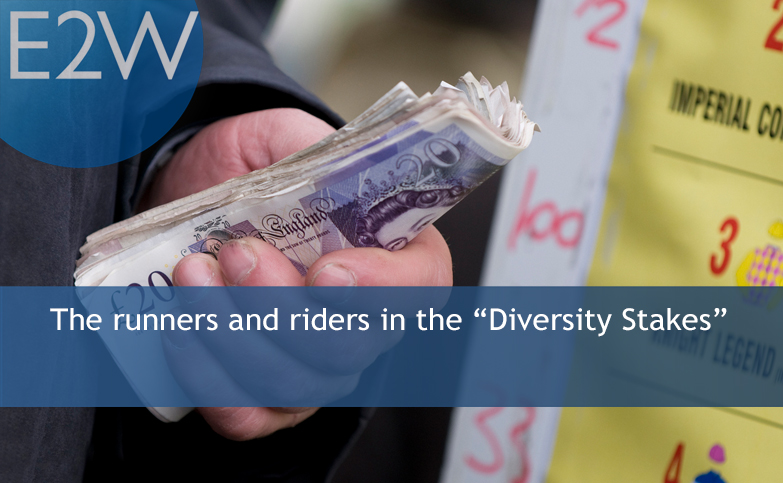
The runners and riders in the “Diversity Stakes”
Mark.Freed / 15 Jun 2018
What does it take for a financial services firm to win the diversity race?
How to place your money on a winner – what to look out for in a winning organisation.
I am not a betting man, never have been and probably never will be but with Royal Ascot happening in June, it made me think. The financial services sector has been under starter’s orders in the race that is the “Diversity Stakes” for quite some time now and it would be interesting to open a ‘book’ on the sector’s winners and losers. I reckon that I could spot a donkey and a challenger from the front-runners.
Now that the prize – gender diversity and all the benefits it brings - is understood and the penalties for not entering the races have increased, it is worth pointing out there are no significant non-runners in financial services. All firms of every size and across all sectors are at least entering the race. Here’s a breakdown of the financial services runners and riders.
Donkeys – Odds 100-1
There are a number of metaphorical donkeys. They are easy to spot – predominantly male boards with maybe a single woman, nothing about diversity on the website, scant detail in their gender pay gap report. They are still paying lip service and ticking boxes.
Challengers - Odds 30-1
This category sounds promising and on the whole it is. Like a horse and jockey preparing for the Gold Cup, they’re in training - I would put most financial institutions in this category.
Their challenger tendencies might be that they are involved in some external diversity initiatives, perhaps they’ve signed the Women in Finance Charter; the board will have diversity on the agenda and they will have a Diversity and Inclusion Officer; if targets have been set, then they probably haven’t been apportioned to those that can make a difference – managers and recruitment.
Any number of initiatives will have been launched – women’s networks, gender balanced short lists, unconscious bias training, even returner programmes but these are discrete rather than part of a major strategy. Their gender pay gap report will include a section on what they are doing to address the gap and will reflect a lack of ‘macro-approach’.
Front-runners -Odds 5-1
I would estimate that currently less than 10% of firms are ‘fit’ enough to win the “Diversity Stakes”. Those that are in great racing shape have implemented co-ordinated, well considered strategies that would make them real contenders for the prize. The strategy will have four key pillars:-
- Commitment – The board will have made a commitment, set targets and apportioned them to key stakeholders – managers, HR, recruitment. Along with the targets, budgets will have been set. And of course, the board itself is gender diverse.
- Recruitment – The commitment made by the board and apportioned to recruitment will probably result in a need to recruit more women than men in a number of areas of the institution. Doing things in the same old way produces the same old results – these firms have already implemented a diversity recruitment strategy.
- Pipeline Development – A front-runner will have strategies in place to encourage women into the industry, particularly in disciplines where addressing the gender gap is most urgent such as technology and front office. There will also be strategies in to ensure that women succeed – mentoring, coaching and supporting high potentials.
- Culture and Working Practices: This means creating a flexible and supportive environment where everyone can contribute, be recognised and reach their full potential. Contenders for the prize will accommodate flexible working and parental leave and they’ll support and encourage diversity in all its guises.
We would like to see the race over with all contenders finishing simultaneously! – an indication of a healthy sector with a gender diverse workforce. But we know that isn’t going to happen for a while.
In the meantime, E2W are showcasing some of the bookies’ favourites, our front-runners, here as part our commitment to share best practice in the firms with whom we work.
If you would like to improve your odds of winning in the diversity stakes, then please contact us – we’d love to hear from you.
Mark Freed is CEO of E2W, the company that he set up with Tina twenty years ago to address the issue of gender diversity. He is passionate about gender parity and encourages more men to join the campaign.
Back to blog



 Women in Financial Services
Women in Financial Services